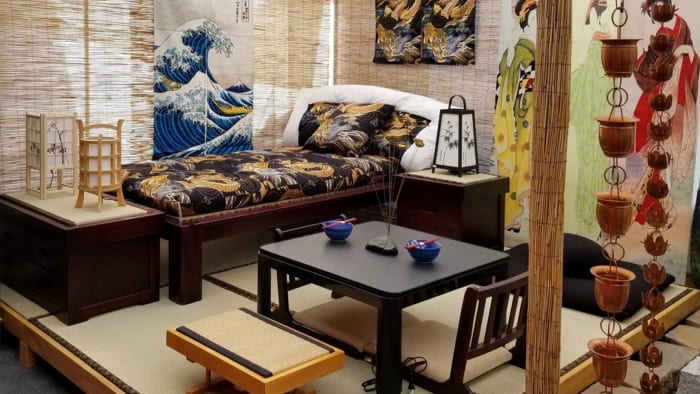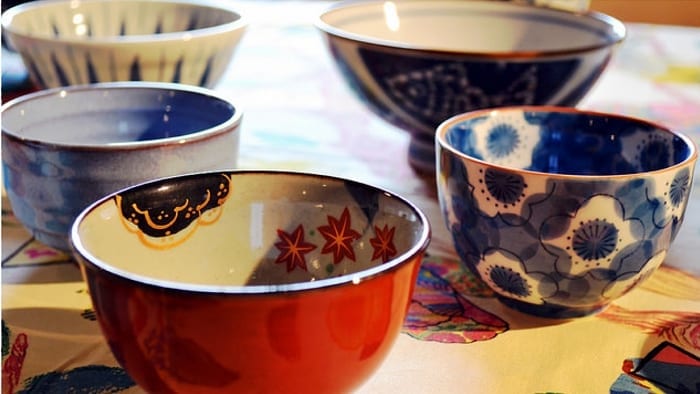Most of us don’t just like Japanese cuisine – we absolutely love it! After all, who wouldn’t? Sushi, sashimi, tempura, soba – just the sound of these delectable dishes fill our tummies with delight.
We know that in your quest to try to replicate an authentic Japanese dining experience, you’ve probably caught yourself buying your own nori (seaweed) and rolling your own homemade sushi using a bamboo mat. Don’t worry; you’re not alone. But what if we told you that while the food is an important part of the well-loved Japanese dining experience, the tableware is also equally important?
In Japan, where tradition and form are closely followed, it makes sense that the tableware you use and the way that you use them matter a great deal in creating a truly authentic Japanese atmosphere, so if you’re looking to impress your friends with a Japanese dinner or simply looking to fly off into Japan. At the same time, in the comfort of your own home, read on to find the Japanese tableware that’s a must for you.
Japanese Dining Experience Bowls
Bowls are a large part of the Japanese dining culture. Like China, Japan mostly uses bowls to eat their meals instead of plates that are more common in the West.
We wanted to make sure this bowl is simple – the Chawan is a hand-sized bowl used to serve the soft, sticky Japanese rice we’ve come to love. With its small, light-weight design, you usually hold them close to you as you feast on your delicious Japanese dishes.
For non-rice bowls, you can look at the Shiru-wan, which is used to serve soup dishes like miso soup. As such, it comes with a lid to seal off the heat inside and usually features beautiful designs such as flowers and other Japanese artwork. The Kobachi, which is a similarly-sized bowl, is for holding special delicacies like chimmi.
The Danburi-bachi is a big bowl used for the delicious soba or udon, a dish best eaten during those cold nights for noodles. TheNimono-wan, on the other hand, is a medium-sized bowl used for Japanese food that needs stewing and boiling. While both items are commonly used for noodles, using them for rice dishes such as donburimono is not uncommon.
Japanese Dining Experience Dishware
While bowls form the cornerstone of Japanese tableware, plates are not unheard of in the Land of the Rising Sun.
The Yakimono-zara is used for grilled foods. While it may come in different sizes and shapes, the most common form is a small black rectangular plate. You usually use this plate when serving Yakiniku, which is the broad term for “grilled meat.” Japanese-roasted chicken with a slice of lemon or skewered Japanese barbecue is the perfect dish for this tableware.
A plate is the Chuzara, which is thought of as a middle between a bowl and a plate. A Chuzara looks more like a bowl with its round, concave design but too flat to hold anything. As such, we use this to serve sashimi and sushi – a beautiful combination of color and design which you wouldn’t want to miss out on when setting up your Japanese table. Another plate, called the Kozara is a similar but smaller type of plate.
Other Japanese Tableware
Your Japanese Dining Experience would not be complete without one or two cups of tea. Japanese green tea is a must-try to soothe and cleanse your palate after much gusto over your meals. For this, you need the Yunomi-jawan, which is a small no-handle teacup for any Japanese occasion. This simple, no-frills teacup is sure to make drinking your hot tea much more enjoyable.
Finally, the last item on our tableware list is the Chopsticks. No Japanese experience is complete without this iconic dining utensil. The best kinds of chopsticks are those made from authentic Japanese yew wood. We also make them from bamboo, plastic wood, and stainless steel – all are also of good quality. If you’re looking to give your chopsticks some rest in between meals, consider looking for a Hashi-oki. Designs are usually colorful and varied in nature, so cute knick-knack-like items will be common.
Serving sushi and sashimi is just the first step in creating a truly authentic Japanese dining experience, as tradition-heavy Japan emphasizes the tableware used. So if you’re looking to impress your friends and family, look towards buying great quality Japanese tableware from Japanese Style.
Have questions about Japanese dining? Send us an email!



